Vote for Your Favorite Wildlife Photo of the Year
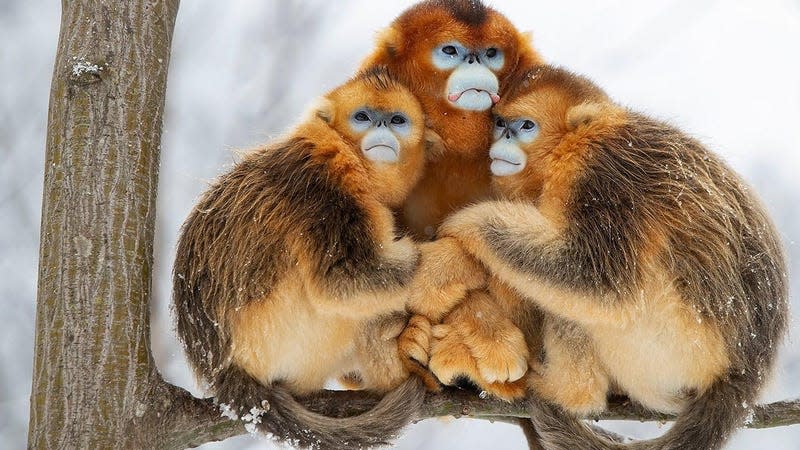
Do you prefer a happy shot of polar cub frolicking among flowers, or a frightening close-up of a wasp’s attack on a spider? The National History Museum in London is asking for the public to vote on its top nature photos of 2022. On Wednesday, it opened up the People’s Choice portion of its annual Wildlife Photographer of the Year competition.
The contest is now in its 58th year, with the Museum having hosted and produced it since the 1980s. This year, it garnered nearly 40,000 entries from photographers across 93 countries, all meant to display the shocking and beautiful moments that nature has to offer. In early October, the top winning images of its main competition—judged by a panel of photographers, artists, and scientists—were revealed. But the Museum is also allowing the public to get a say.
Read more
“Voters will have a challenge to choose from this stunning range of photographs which tell vital stories and connect people to issues across the planet. We are looking forward to finding out which of these images emerges as the favorite,” said Douglas Gurr, director of the Natural History Museum, in a statement provided to Gizmodo.
Here are the selections vying for your vote. Voting will be open until February 2, 2023, and can be accessed online here. In a new first this year, people can also vote in-person using interactive screens set up at the Museum. The top five winning images will be displayed online, while the No. 1 winner will receive a dedicated showcase at the Museum’s exhibition of the competition through early July.
“Fox affection”
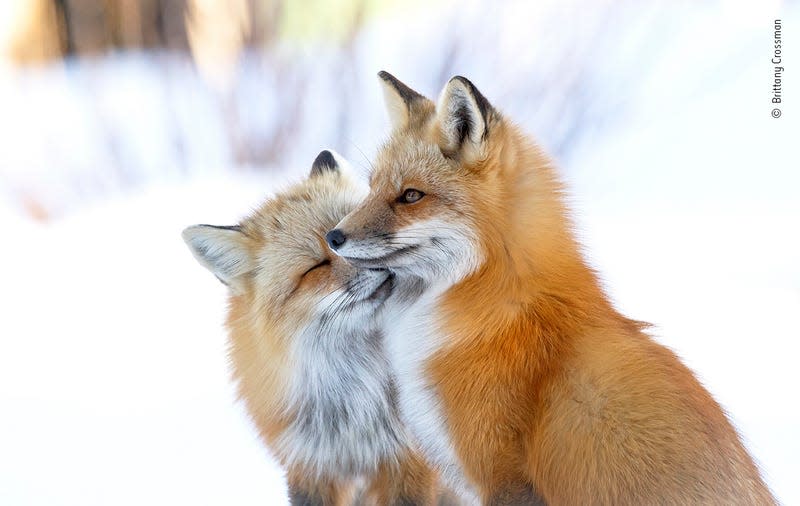
This sweet photo of cuddly red foxes was taken by Brittany Crossman of Canada. These foxes mate in the winter and can be sometimes be spotted close to one another prior to entering the temporary dens where they will breed and initially raise their young.
“Life and Art”
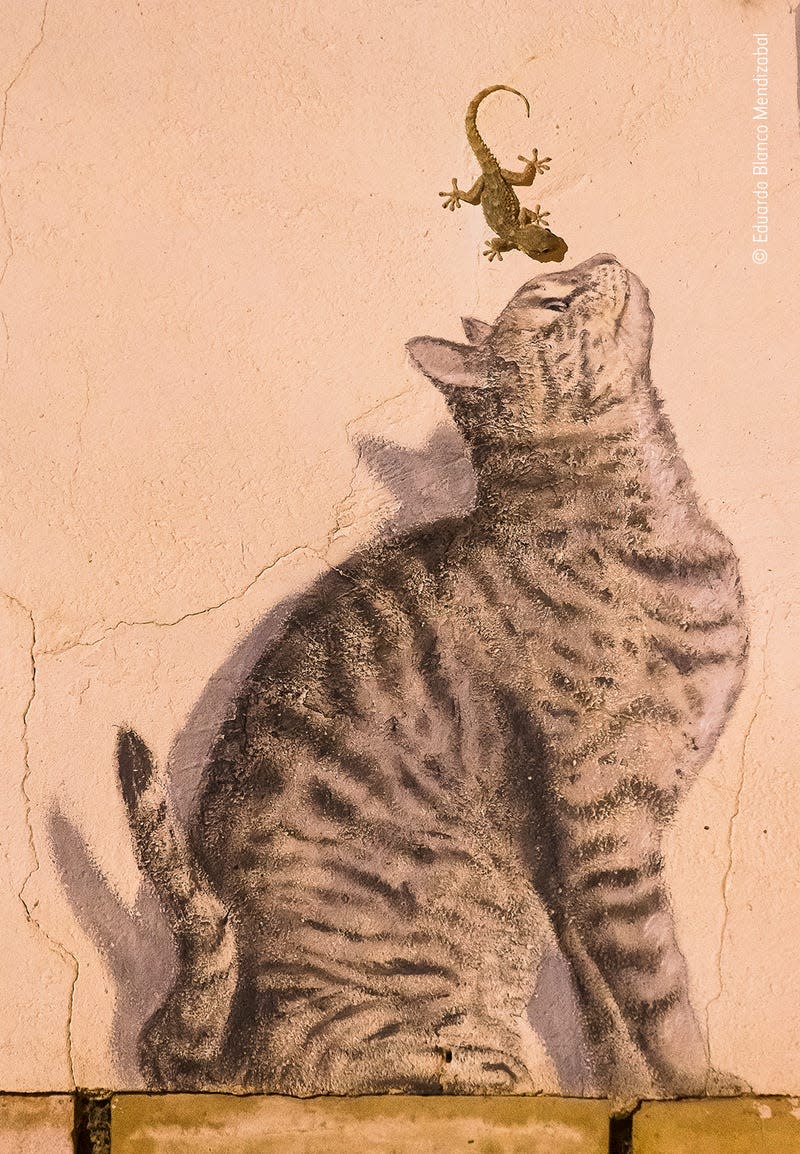
Eduardo Blanco Mendizabal was walking down a street in his hometown of Corella in northern Spain when he spotted the cat graffiti. He soon returned with a camera, knowing that, with enough patience, he would eventually come across a common wall gecko making its way through.
“The Frog with the Ruby Eyes”

This close-up was taken by Jaime Culebra of Spain. It features a female Mindo glass frog that Culebra felt compelled to photograph due to her strikingly ruby eyes. These frogs are native only to the South American country of Ecuador. And though they were recently rediscovered and spotted in the wild for the first time in decades, they’re still thought to be endangered.
“Wasp Attack”
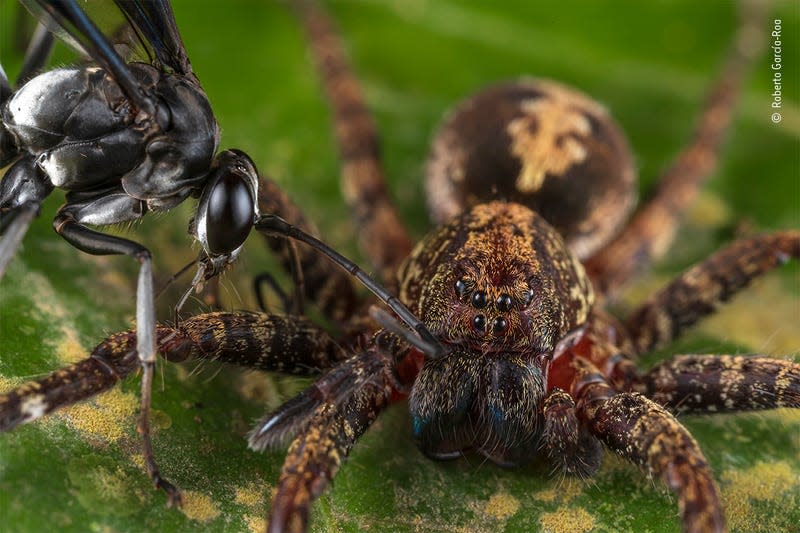
Taken by Roberto García-Roa of Spain, this image shows the aftermath of a fierce conflict between a pompilid wasp and the ornate Ctenus spider in the Peruvian jungle of Tambopata. These wasps are also known as spider wasps, and, as the name implies, they actively hunt spiders. The wasp above appears to be making sure that its stinger has paralyzed its prey before it will drag the body back to a nest for dinner.
“World of the Snow Leopard”
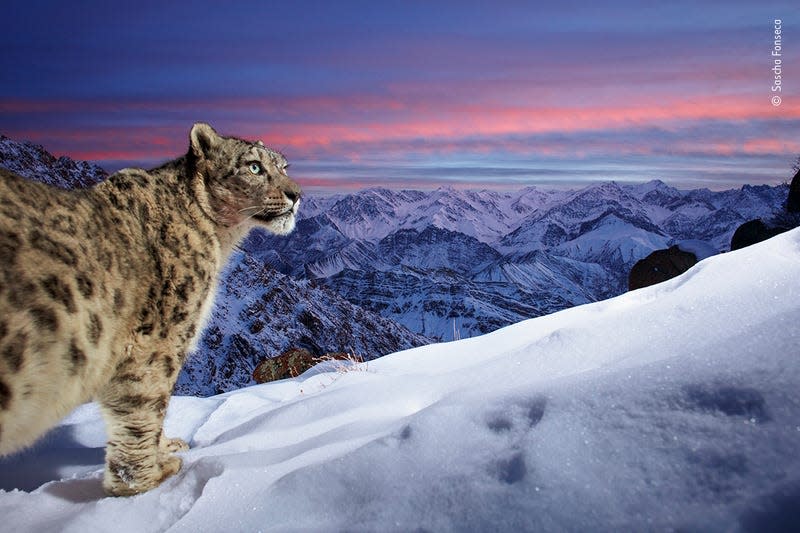
This dazzling photograph was taken by Sascha Fonseca of Germany. Fonseca’s bait-free camera trap was able to capture the unsuspecting snow leopard against the backdrop of the mountains along the Ladakh Range in northern India.
“A Golden Huddle”
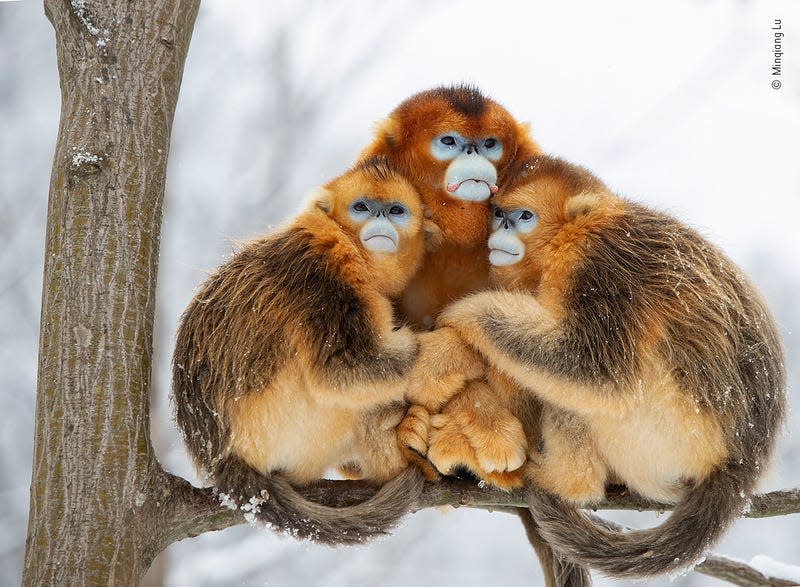
Minqiang Lu of China took this adorable photo of three snub-nosed monkeys, two females and a male, trying to stay warm in extremely cold temperatures. Lu had to walk up a mountain and remain patient for a half hour in -14°F weather before he managed to get the shot.
“A Fox’s Tale”

This image was taken by Simon Withyman in the UK city of Bristol. It depicts a young and injured red fox carrying away a chicken leg that was left for her by residents in the area. The fox was hurt by plastic barrier netting commonly used as fencing on building sites—an example of the many ways that human action can inadvertently harm wildlife that Withyman wanted to illustrate with his entry. Tragically, though the fox was eventually captured, treated, and safely released, she would die six months later from a car collision.
“Head to Head”

This image of two female muskoxen barreling into each other in Norway’s Dovrefjell-Sunndalsfjella National Park was caught by Miquel Angel Artús Illana. Illana was expecting to see two nearby males from two separate families of muskox clash since the females were in heat, but the weaker male conceded without a fight. For some reason, though, the females then briefly butted heads instead, leading to this action shot.
“Fishing for Glass Eels”
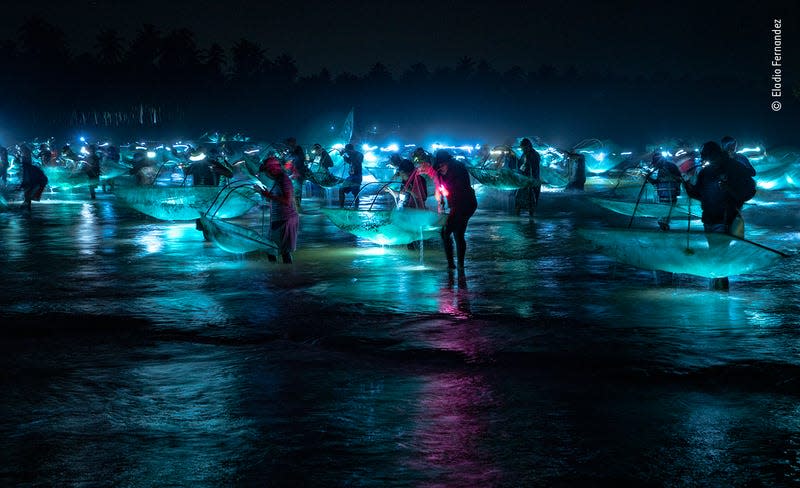
This eerie photo was taken by Eladio Fernandez of the Dominican Republic, where the industry of fishing for larval American eels, also known as glass eels, has erupted in recent years. Unfortunately, there are few regulations surrounding the practice in the Caribbean, leading to fears that overfishing in this area will only further threaten these endangered populations.
“Caribbean crèche”
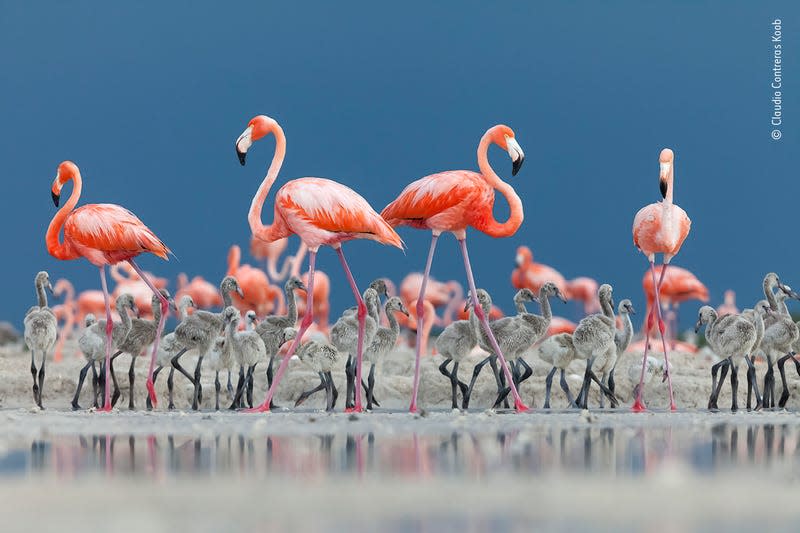
This beautiful group of a flamingo colony in the Ría Lagartos Biosphere Reserve in Mexico was photographed by Claudio Contreras Koob. Though flamingos are generally abundant, there are concerns that the ongoing effects of climate change could someday significantly harm their numbers.
“A Tight Grip”
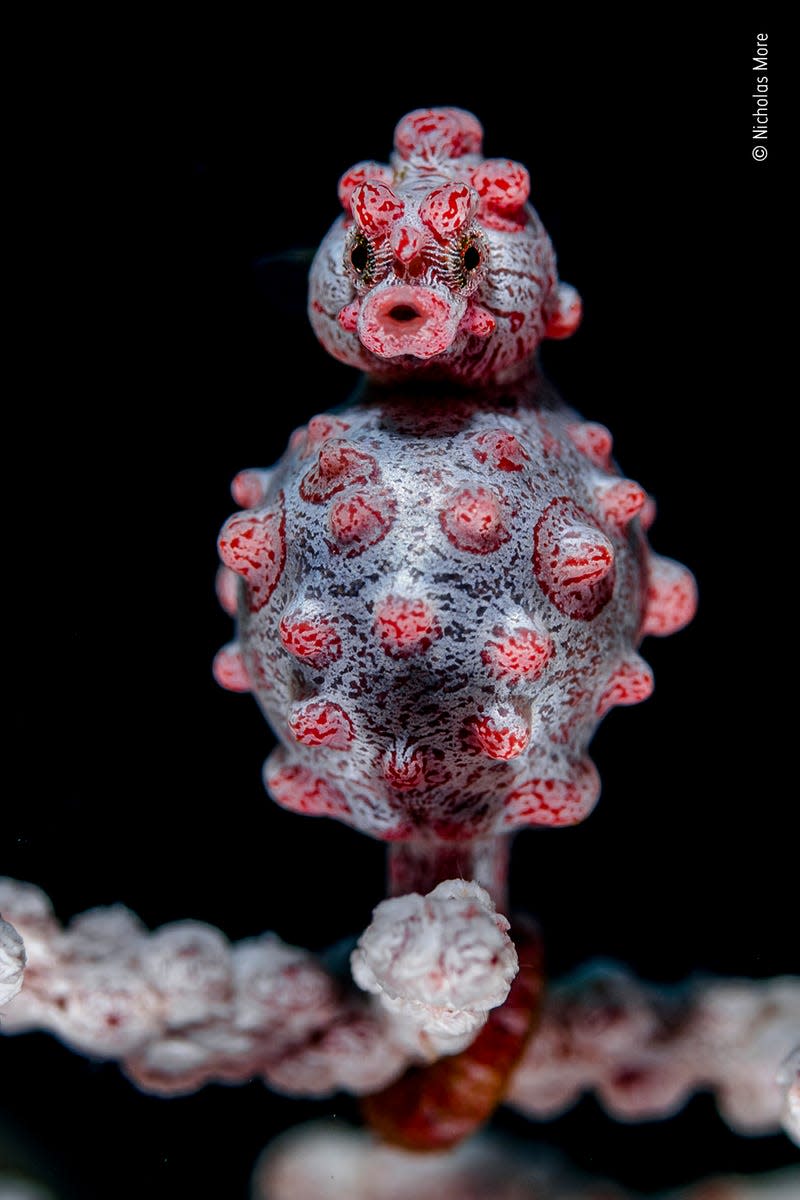
This isn’t an oddly shaped raspberry; it’s a photo of a male Bargibant’s seahorse, taken by Nicolas More in the UK. This seahorse is holding on tight to a type of coral known as a pink sea fan and appears to be pregnant—a unique trait of theirs shared only by a few other members of the animal kingdom, such as closely related seadragons. These seahorses will gestate for about two weeks before giving birth to tiny live young.
“Portrait of Olobor”
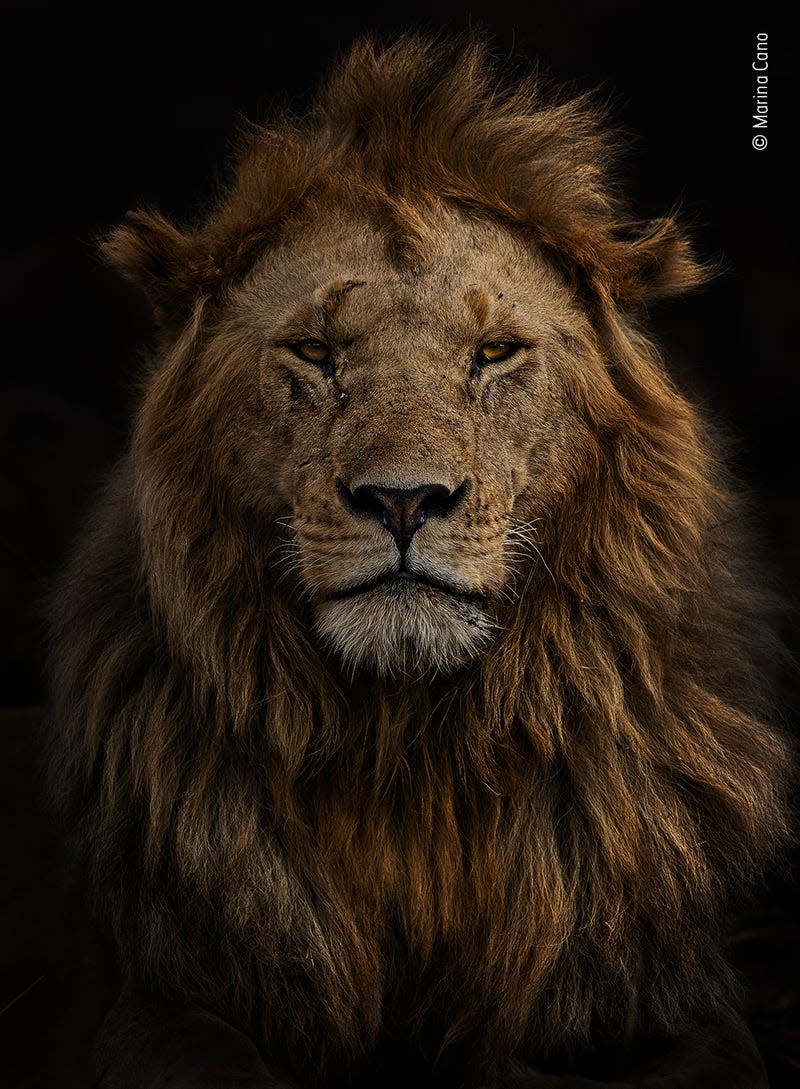
Marina Cano of Spain got this close-up of the lion Olobor, one of the most well-known males of the Black Rock pride in Kenya’s Maasai Mara National Reserve. The black background was fortuitously created by Olobor resting on ground that had been recently burned by local Maasai herdsmen in order to encourage the growth of new grass.
“That’s the Spot!”
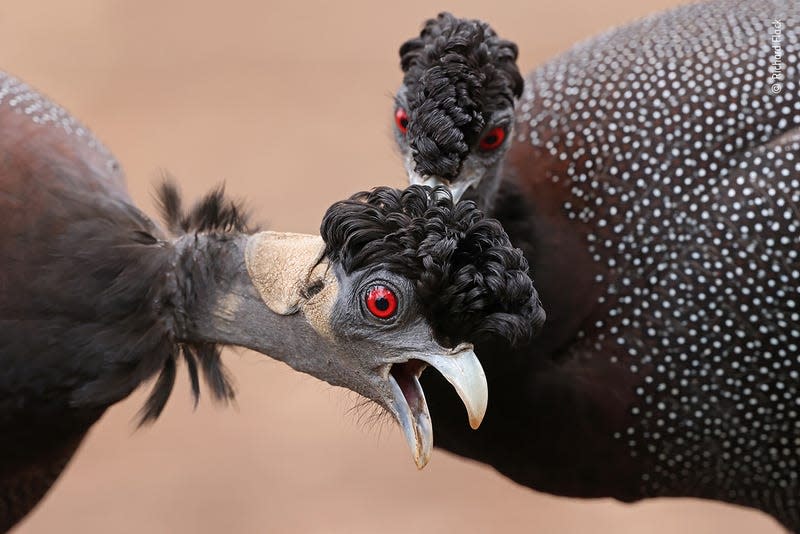
This well-timed snapshot was taken by Richard Flack in South Africa’s Kruger National Park. Flack had come across a flock of crested guineafowl that allowed him to follow along as they were foraging in the area. At some point, he noticed one of the guineafowl taking time to scratch another’s head and ears, with the receiver seemingly enjoying the gesture.
“It’s not often you get to capture emotion in the faces of birds . . . but there was no doubt—that was one satisfied guineafowl!” said Flack.
“Hyena Highway”

Sam Rowley of the UK used a remote camera trap to catch a shot of a member of a famous spotted hyena family in the city of Harar in Ethiopia, known as the Highway Clan. These opportunistic creatures are actually tolerated and even occasionally fed by locals, since they scavenge for foods like rotting meat that could pose a disease risk to humans.
“Unlucky for the Cat”

This may look like a toy, but it’s actually a stuffed Andean mountain cat. The image was taken by Sebastian Kennerknecht of the USA, in the region of Abra Granada in Argentina. Though these cats are venerated as guardians of the mountain by locals, they’re also considered a good luck charm for an especially fertile season for livestock. As a result, the cats are sometimes killed and worn during ceremonies to prepare for the year ahead.
“Covid Litter”

This image was taken by Auke-Florian Hiemstra of the Netherlands. It shows a poor young perch fish that ended up in the thumb of a surgical glove discarded in a nearby canal. Though masks and other protective equipment have helped protect people throughout the covid-19 pandemic, the subsequent litter created as a result has been harmful to wildlife.
“Coastline Wolf”
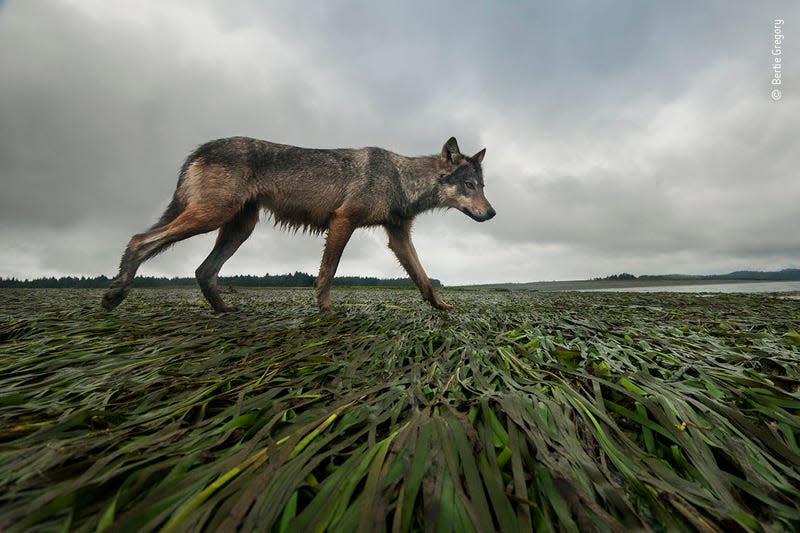
This snapshot of a female grey wolf was caught by Bertie Gregory of the UK. Gregory had actually been hoping to come across black bears while traveling along the shoreline in his dinghy on the west coast of Vancouver Island, British Colombia. But when he spotted the wolf, he changed his plans to make sure he could document the lucky find.
“Red and Yellow”
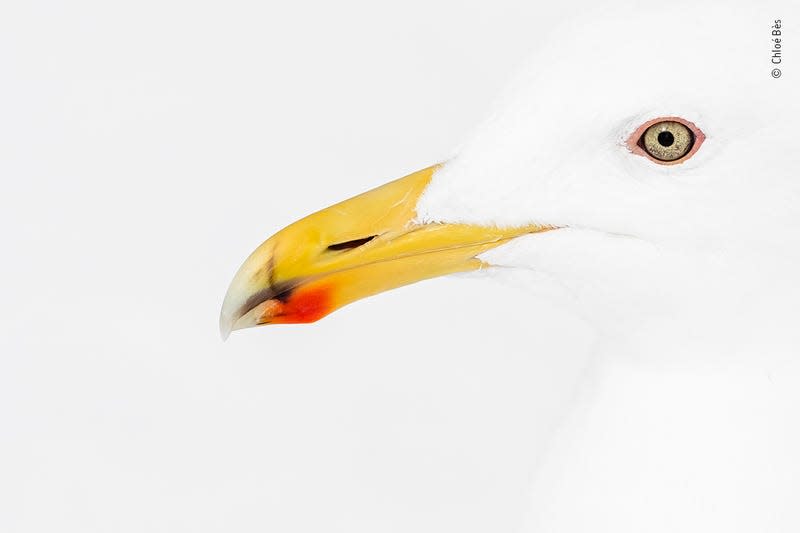
This breathtaking photo was taken by Chloé Bès of France. It highlights the beak and eye of a single glaucous-winged gull near Rausu port, on the Japanese island of Hokkaido.
“Holding on”

This photo by Igor Altuna of Spain features a leopardess that has freshly killed a Kinda baboon in Zambia’s South Luangwa National Park, with the baboon’s baby still holding on. According to Altuna, the leopardess took both baboons back to her own young cub. The cub then appeared to play with the baby for over an hour before killing it—a grim illustration of the circle of life.
“Snowshoe Hare Stare”
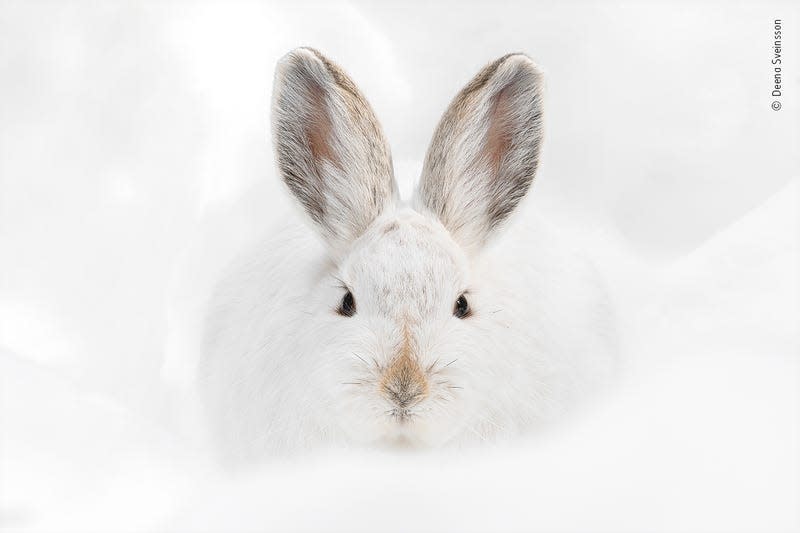
Deena Sveinsson had been snowshoeing deep in the forests of the Rocky Mountain National Park in Colorado in hopes of finding some local wildlife to photograph. She had nearly given up when she spotted this snowshoe hare. The hare then gave her a cinematic moment as it briefly turned to meet the camera.
“Night Encounter”

This almost all-black photo was taken by Sami Vartiainen of Finland. Though it may be hard to make out, it shows a badger near its den, or sett, in a forest near Helsinki. Remarkably, Vartiainen was able to observe the badger for 45 minutes before it ventured farther into the dark, likely in search of food.
“Among the Flowers”
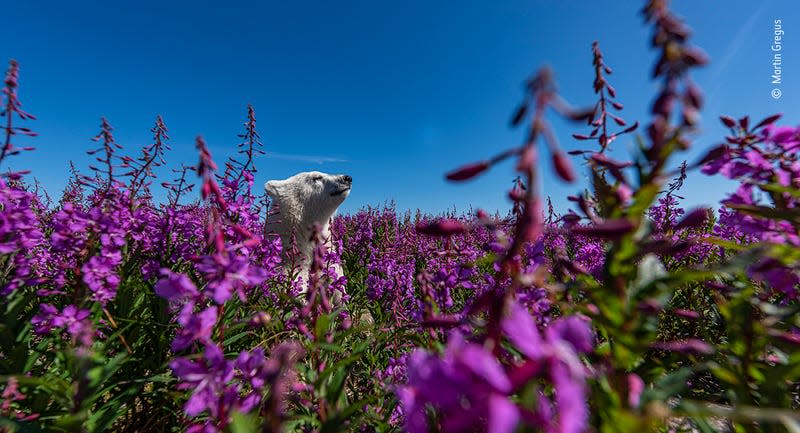
This serene shot of a polar bear cub enjoying the verdant landscape was taken remotely by Martin Gregus of Canada, while the bear was playing in a mass of fireweed on the coast of Hudson Bay.
“The Elusive Golden Cat”
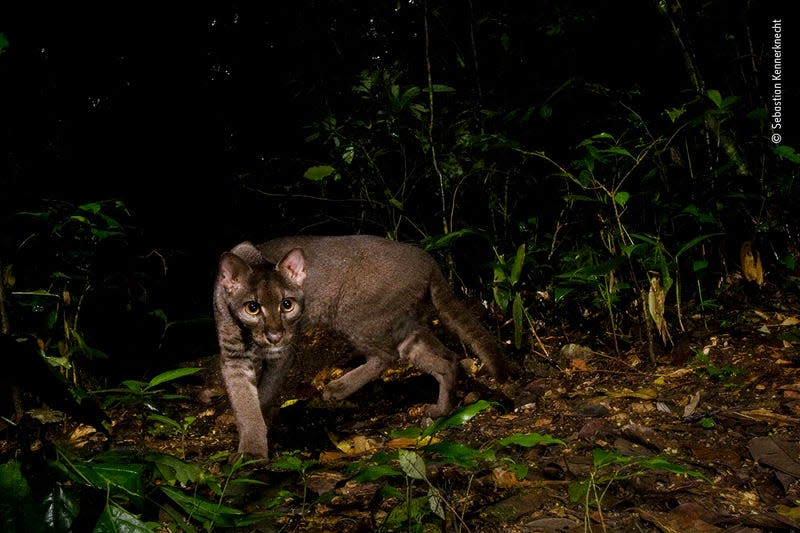
Another entry from Sebastian Kennerknecht, this photograph shows off a African golden cat in the dense rainforests of Kibale National Park in Uganda. These felines are rarely seen by humans, and little is known about them. Unfortunately, their numbers are thought to be in decline, thanks in large part to deforestation, and there may be only around 10,000 of these cats still in the wild.
“Heads or Tails?”
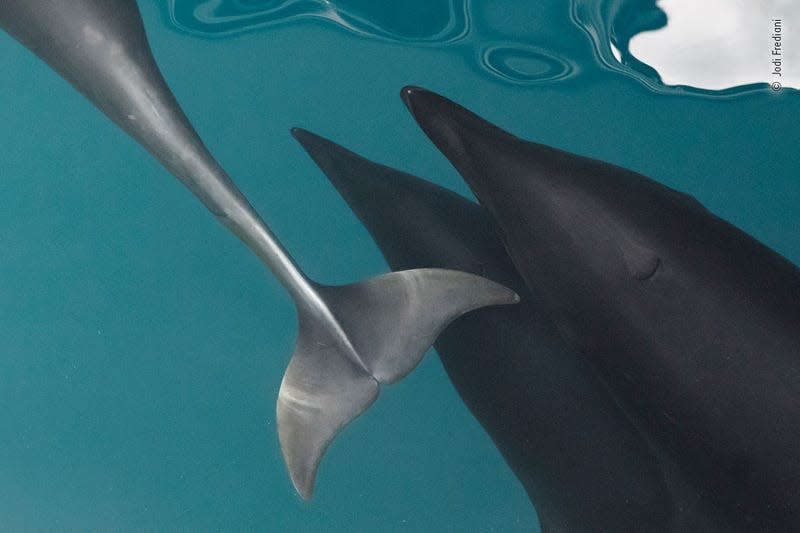
The unusually clear waters in Monterey Bay, California allowed Jodi Frediani of the U.S. to photograph these three northern right whale dolphins from a boat above.
“Caught by the Cat”
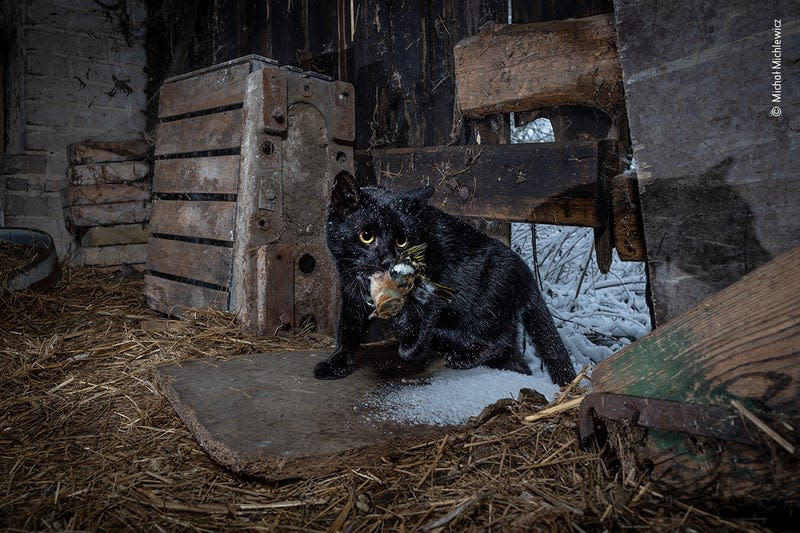
Though many domestic cats live comfortably inside warm homes with their human owners, plenty live exclusively in or regularly still visit the outdoors. This snapshot of a house cat fresh off its capture of a chaffinch was taken by Michał Michlewicz of Poland. Unfortunately, these outdoor cats can have a very negative impact on the surrounding bird life.
More from Gizmodo
Sign up for Gizmodo's Newsletter. For the latest news, Facebook, Twitter and Instagram.

